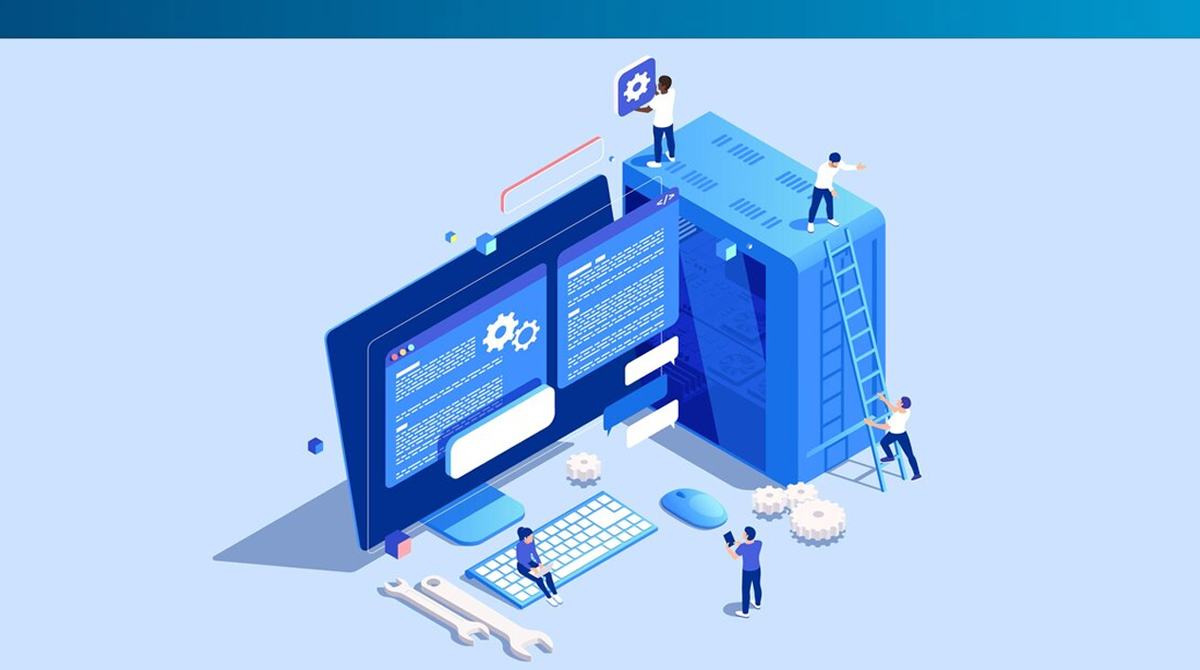You know better than anyone that SaaS companies can’t be successful without a comprehensive plan to grow. It’s great that you’ve launched your startup and onboarded some paying customers, but now that it’s time to take things to the next level, you need some SaaS growth strategies that have been proven successful.
As more and more companies turn to SaaS solutions, the demand for businesses like yours will only continue to grow. Whether you can keep up will largely depend on your growth strategies. So what exactly does that mean? I’m glad you asked.
A SaaS growth strategy is precisely what it sounds like – a thoughtfully designed method for scaling your business. It’s a complex system involving a fool-proof marketing plan that will draw customers and get your product into the right hands.
Luckily for you, there’s no need to reinvent the wheel here. There are several tried-and-true strategies that will help you reach your goals, and I’m here to walk you through them.
These strategies are absolutely essential to the success of your SaaS business. Your growth rate entirely depends on the effectiveness of your growth strategies. We will talk a lot about user experience, and I want you to keep that in mind as we go through these methods.
As you scale your business, you should be focused on four critical elements:
- attracting potential customers
- satisfying existing customers
- encouraging customer retention
- investing in product development
Core Components of Any SaaS Growth Strategy
So what makes a great SaaS growth strategy? No two are created equal, but here are some tips to help you in the development stage:
-
Before you can decide on which growth strategies to try, you need to identify the needs of your customer base. You know your target audience, so now it’s time to figure out what makes them tick.
-
Your SaaS product is only as good as your best marketing strategies. Don’t be afraid to outsource: think influencers or content marketing.
-
You’re setting yourself up for failure if you don’t familiarize yourself with the competition. The SaaS market is vast and continually growing globally, and no matter what pain points your product can address, there’s someone else doing it too. How does your offering stand out?
SaaS Growth Strategies
You know how good your product features are. Your go-to-market strategy was successful. Now what? How can you minimize churn while optimizing all stages of the customer journey? These approaches have resulted in successful business growth for B2B SaaS companies. Is yours next?

Prioritize Customer Acquisition and Retention
I recommend asking yourself a few questions to determine if you’re putting your customers first. Start with these:
-
How does customer acquisition cost compare to customer lifetime value, and how are you leveraging that to your advantage?
-
Are you focusing on lead generation and new customers, or on upselling and cross-selling existing customers? Do you have a good activation strategy?
-
Which marketing channels result in the best conversion rates? (Pro tip: this could depend on your customer segments, and it’s why it’s so important to know your audience.)
-
How high is your churn rate and what is driving that?
-
Are your customers incentivized to give you a referral?
It’s just as crucial to zero in on onboarding new users as investing in your existing base. Consider these examples of how to do both:
| Attracting Potential and New Customers | Satisfying Existing Customers |
| Offer free trials or freemium access to draw in leads who may be on the fence | Encourage – and implement – customer feedback to let your users know their experience is important to you |
| Utilize your sales team – encourage them to lead an educational webinar or collaborate on new product marketing initiatives | Regularly test the functionality of your product to make sure it’s performing flawlessly |
| Consider partnerships with influencers to reach untapped markets | Check for any opportunities for automation: how can you make your customers’ lives easier? |
| Revamp your marketing campaigns to advertise any new features or updated pricing models | Optimize your customer support using personas to suss out what your base needs from you |
Rethink Your Pricing Strategy
Most players in the SaaS industry don’t do well with a one-size-fits-all approach. Your pricing strategy should include options so that your customers can choose to pay for what they need. This also gives you the opportunity to upsell existing customers, especially if you notice that there are premium features they’d benefit from.
Free trials or freemium memberships are part of a great pricing strategy, as they allow customers to see what your product can do for them before making a commitment. Options are attractive; people don’t like to feel boxed into pricing plans that don’t suit their needs. Again, user experience is important here – no one wants to pay for a mediocre product.
Don’t Skimp on Content Marketing
SEO strategies are no longer optional. You need your content to be visible, and in order to get people to your landing pages, your website needs to rank in search engines. Don’t underestimate the impact that content marketing can have on your bottom line.
This also goes for social media. Your online presence needs to be a priority. If the pandemic taught us anything, it’s that how we represent our businesses online correlates directly to our profit.
You can use blog posts, whether on your own blog or using guest posts on others, to drive traffic to your website if you know how to leverage SEO. And if you don’t, it’s a good idea to outsource that, because you’re not going to want to risk losing out on the leads that content marketing can generate.
Expand Your Product Offering
You can increase your MRR and ARR by expanding your offering and doing more for your customers. This will change your pricing, but people are willing to pay for new features, especially if they save time or money.
Your revenue growth rate will be influenced by a number of factors, but an easy way to increase it is to offer more features for a higher price. Anything that can automate workflows will be a big hit, so you may want to start there.

Go Global: Reach Into New Markets
If there is a national market for your product, chances are, there’s an international one too. The best thing about the SaaS industry is that it’s cloud-based, which means you’re not bound to any specific location.
There are regulatory concerns to contend with, but it’s probably worth it to expand. Make sure your financing covers this plan and if not, look into new options. If your goal is heading to IPO, you should know that Europe is the source of 30% of the global revenue for companies that do – so it’s no wonder why so many SaaS founders choose to go global.
Trust the Data
A good product-led marketing strategy is data-based, and your metrics are going to drive your success.
Examples of Successful SaaS Growth
Let’s look at a few case studies. The SaaS companies below have managed to scale their businesses in extremely successful ways. But how did they do it? It wasn’t by sitting back and hoping for the best – there was a great deal of effort and strategy involved.
Zendesk
I like to use Zendesk as an example of having a great growth strategy because they have shaken up the way they do things in the years since launch and found a way to make that work for them.
Zendesk’s pricing strategy is what ultimately exploded their growth. By expanding offerings and evolving their pricing (including many tiers that addressed their customers’ individual needs), they increased revenue and scaled their business.
Dropbox
Dropbox’s focus on upselling was a brilliant use of resources. They offered a free plan, but it was extremely limited. Their “plus” plan took all the perks of the freemium plan and exploded it. By paying for the premium version, customers get a thousand times the amount of storage they got with the free plan.
Their pricing plan is based on customer usage, which provides an element of customization. Again, no one wants to pay for features they’re not using. So Dropbox allows their customers to pay only for what they’ll use and everyone’s happy.
Slack
Slack took on the global market with ease, proving that expansion as a growth strategy is nothing to scoff at. Its product brings people from all over the world together in one cohesive space, and its seat-based pricing model makes it easy for customers to scale it according to their needs.
They’ve also focused on product expansion, offering new features to their lineup that customers are happy to pay for from a company they already trust.
Hubspot
Hubspot is another excellent example of utilizing product expansion, launching features that give their customers access to their existing product without needing to go through a sales team member first.
They also moved internationally with great levels of success, finding a customer base in Europe and beyond that now accounts for a fair share of Hubspot’s revenue.
How to Get Started on Your Growth Plan
The best time to launch your growth plan is now. You’re the expert on your product and your base, so it’s not going to be difficult for you to figure out what will help your business grow. You knew going into this venture that scaling was a priority, and now it’s time to implement your ideas.
Where should you start? Think of these suggestions as a map to get you on your way:
-
Get customer feedback and use it. Find out what your customers want and give it to them. They will pay for what they need, and your revenue will increase because of it.
-
Stay on top of trends. Don’t fall behind the competition because you’re not paying attention. There’s no shame in learning from what is and is not working for others in the space.
-
Focus on bringing in new customers – freemium memberships or free trials are a great start. The more customers you have on board, the more opportunities you’ll have to monetize them.
Conclusion
You’re not going to get anywhere by implementing one of these strategies. You need multiple options for scaling your business – don’t put all your eggs in one basket, as they say. By pinpointing the needs and wants of your customer base, you can decide which strategies need to be prioritized for your particular market.
Your product is your bread and butter, but it’s not your only asset. If you can prove to existing and potential customers that you have what it takes to constantly improve on what you’re offering, you’ll come out ahead of the competition.
What you should do now
- Book a Growth Session and learn the 3 things you should do today to unblock your SaaS potential and start scaling.
- Read more articles in our blog.
- If you know someone who’d enjoy this article, share it with them via Facebook, Twitter/X, LinkedIn, or email.

